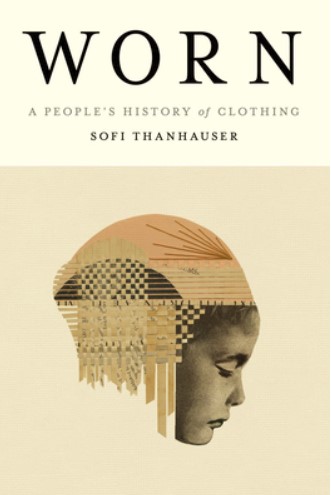This is a staggeringly ambitious book, evident already in the subtitle. By “people” Thanhauser means all people, everywhere. And by “clothing” she considers not only the sewn or knitted garments we use for protection and expression, but also the raw materials and labor that goes into making them. In other words, she attempts a sweeping history of humanity’s relationship to cloth and clothing from the earliest times to today. Although the historical sweep is broad, her basic question is contemporary: How did textiles and clothing become some of the most exploitative and ecologically degrading objects on earth?
This beautifully written book is divided in sections focused around fibers—linen, cotton, silk, synthetics, and wool. Each section has three chapters examining the history of the raw material, how it is made into fiber, and the many problems associated with turning the fiber into clothes. For me, the most devastating section was on cotton, my favorite textile. Thanhauser shows that there were few times in history when the cultivation of cotton was not linked to labor exploitation, from slaves in the Americas to the use of quasi slave labor in Xinjiang today. Not only this, but most commercially grown cotton requires massive amounts of chemicals and water.
Thanhauser traveled the world to look at how clothing is currently being made. With few exceptions, there are no happy stories here. We all know about the collapse of the Bangladeshi clothing factory in 2013. However, it was a shock to read about the United States’ policy of establishing export processing zones across the Caribbean and Central America. Ostensibly a method to encourage local production, they have mainly functioned as a way to keep local wages down and exports up.
The book ends with a section on wool, a puzzling choice from a historian’s point of view. However, she uses this part to look at small scale efforts to make fiber and clothing in non-exploitative ways. In the process, she goes to wool festivals, tries her hand at weaving, and interviews sheep farmers who are trying to bring almost extinct varieties back to life. This meant to be a hopeful ending.
By making my own clothes, I am part of what Thanhauser calls “the army of the small.“ These include small farmers, weavers, knitters and sewers who are trying to find a different path. But instead of feeling heroic or smug, instead I was depressed after finishing the book. How can these small efforts possibly turn around the massive destruction inherent in our current system of making clothes?



An elegant summary of a troubling, illuminating, important book. You may be but a foot soldier in the “army of the small,” but you do us all a service by calling books like this one to our attention.
I loved this book, and found the beginning so interesting, ie once textiles became desirable, guilds were formed and many excluding women…..the history of viscose was a shock to me…..the overwhelming amount of consumerism in fashion especially when so much feels like fripperies is depressing so I found it a necessary read
Thanks for the book review, Lynn. I’ll look it up.
Thank you for this review. It sounds like a fascinating book.